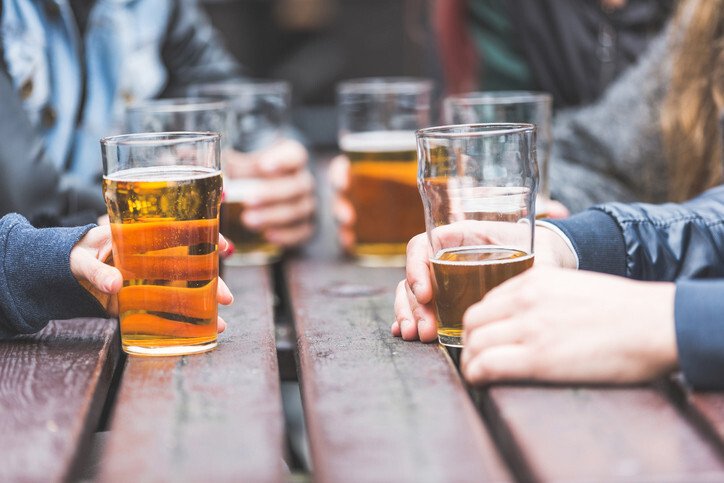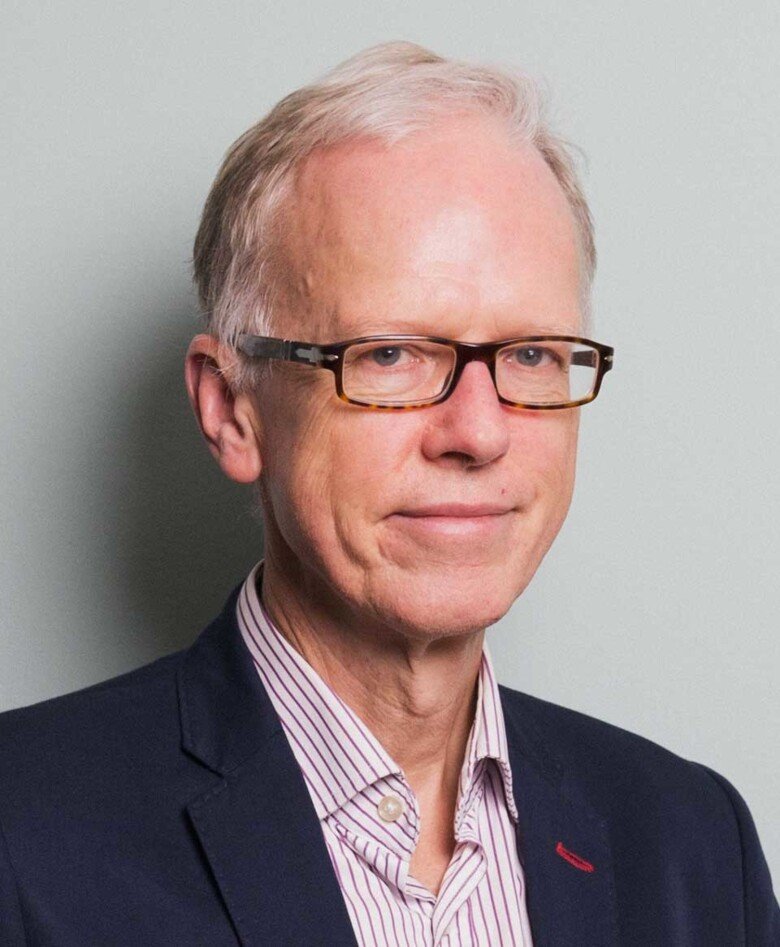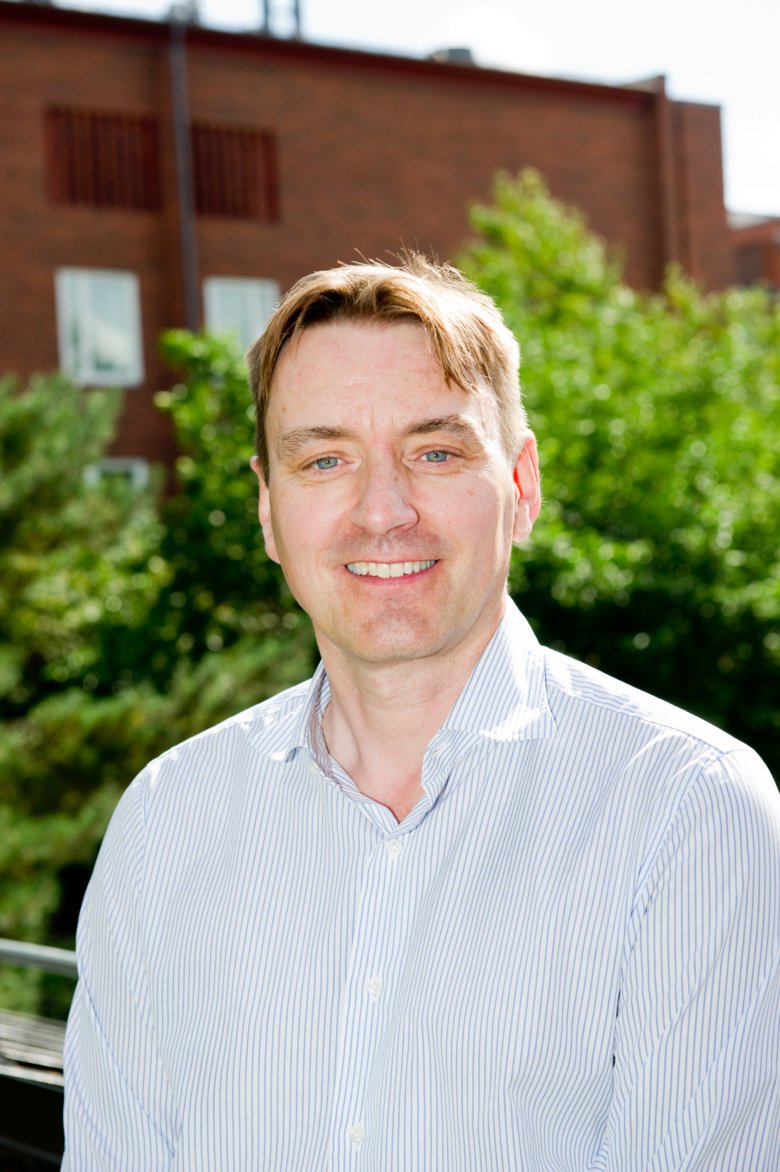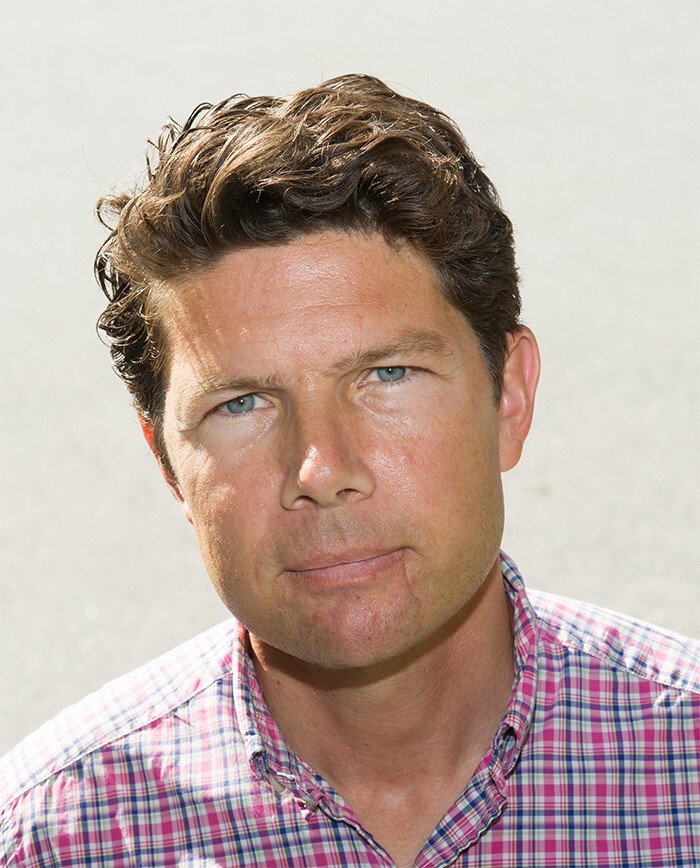One drink too many
The majority of alcohol-dependent people in Sweden have a functioning social life with a family, a home and a job. In total, there are more than one million Swedes who consume alcohol to such an extent that it can be considered harmful and to entail a risk of dependence. But the health services are starting to help them too.

Text: Fredrik Hedlund, first published in Swedish in the magazine Medicinsk Vetenskap no 3, 2015
The standard image of alcohol-dependent people are the shabby men sitting on various park benches around the city, but they are just the tip of the iceberg. Alcohol dependence is a much bigger issue than that. And it can affect anyone.
“Alcohol dependence is very democratic. Anyone can end up in consuming alcohol to a degree that leads to problems. But people with a lower level of education and socioeconomic status will then suffer the consequences more severely. Alcohol–related morbidity, as the diagnosis is called within the health services, is predominantly seen in less privileged socioeconomic groups,” says Sven Andréasson, Professor of Social Medicine at Karolinska Institutet’s Department of Public Health Sciences as well as Senior Consultant and Head of Operations at the alcohol treatment clinic at Riddargatan 1 in Stockholm.

Nine out of ten Swedes over the age of 17 have had alcohol in the last year. Nearly one in two will drink alcohol every week, and more than one in tree will consume the equivalent of a bottle of wine more than once per month or more often. This is the result of a Swedish population study from 2014 including close to 16,000 people between the ages of 17 and 84 conducted by STAD (Stockholm for the prevention of alcohol and drug abuse).
The Swedes’ alcohol consumption has been shown to decrease slowly over the last ten years; however, it is still at markedly higher levels than 20 years ago. The EU membership in 1995 and the following ten years led to a significantly increased alcohol consumption, which is now slowly going back down or possibly stabilising at a higher level, no one knows. Even if this alcohol consumption is widespread in the population, it does not constitute a big problem for the vast majority. Most people are capable of handling their drinking and keep to reasonable amounts, but not all.
Increased significantly
The proportion of high-level consumers has increased significantly since 1995, and the researchers currently estimate that approximately one million Swedes consume alcohol to such a high extent that they are at risk of encountering medical or social issues, and that 300,000 of them have developed a dependence on alcohol. Out of these, there are 50,000 who have a dependence involving large issues, while the great majority – 250,000 people – have a less pronounced dependence, more or less in secret, behind closed doors.
Today's healthcare interventions are mainly focused on the 50,000 individuals with the greatest problems. This is the traditional substance abuse care, which for historical reasons is conducted by social services rather than the health services. But all the others, those who have light to moderate issues, very rarely seek medical care for their problems, and they definitely are not in contact with social services. For this reason, Sven Andréasson started the County Council alcohol treatment clinic at Riddargatan 1 in Stockholm approximately three years ago.
“Alcohol dependence is a stigmatised area. How to make it less stigmatised, and thereby easier to seek help? Part of it is fairly easy to change. For example, make sure to have nice premises and treat people with normal respect and kindness. It is worth mentioning this, because when it comes to this area, people have been browbeaten and ordered around in a different way than what is normally the case within the health services,” he says.
A completely different view
At Riddargatan, he has introduced a completely different view of alcohol dependence and how it should be treated, and also of what the goals for the treatment should be.
“Dependency treatment is of course predominately based on the 12 step concept, or AA, where absolute abstinence is the only goal. We have a patient-based working method, where we look at what could be helpful for a person who would like to change their drinking. Here at the clinic, you first get to choose what goal to aim for: whether you want to quit drinking completely or to reach a more temperate level, and then you also get to choose what type of treatment you prefer. It is important for people to feel in control and that they can choose for themselves,” he says.
A treatment method that does not aim for complete abstinence in all cases has creates quite a few conflicts with the traditional substance abuse care, but time has proven that Sven Andréasson’s approach works. Many people with mild or moderate problems are capable of reducing their drinking and keeping it under control. The clinic has been a success and is now expanding, both in Stockholm and in other parts of the country.
“Yes, in Stockholm we already have another clinic in Mörby, and they’ve decided to build another one in Sickla. Region Skåne is also in the process of starting up clinics in Malmö and Kristianstad. And the clinic in Göteborg is expected to open next year,” says Sven Andréasson.
High prices and a monopoly
When it comes to what the best course of treatment is, Sven Andréasson has no doubts.
“High prices and a monopoly,” he says.
“That bears repeating. We can work with all kinds of interventions, psychosocial and pharmaceutical, but let’s not forget the most basic aspects. Delaying the debut happens, among other ways, through age limitations, supervision and parents contributing by not buying their children alcohol. Those things matter,” he says.
Sven Andréasson points out that Sweden previously regulated the prices at the government-owned monopoly Systembolaget in relation to a purchasing power index, but that this connection no longer exists, and that the prices have not developed accordingly.
“This means that alcohol is significantly cheaper today than it was 20 years ago for people in general. So there is room to raise taxes on alcohol, which would be positive from all perspectives, as this could also go towards financing welfare,” he says.
For those who have already developed alcohol dependence, Sven Andréasson would like to give some reassurance.
“In most cases, alcohol dependence is self-healing. It will pass on its own. People tire of it. In the long-term studies, we see that 75–80 per cent of the people who were dependent five years earlier no longer are. And this with no medical intervention whatsoever,” he says.
Exaggerated doomsday-thinking
He is of the opinion that there is a kind of exaggerated doomsday-thinking when it comes to alcohol dependence, making it a diagnosis for life. That is not the case.
“Most people come out of it and return to a more prudent level of drinking. They don’t become absolute teetotallers, but they drink much less. And afterwards, they are at increased risk, which I think they are aware of,” he says.
So why build special clinics for something that in most cases will pass in five years?
“Those five years can be lined with hellish situations, where the dependent person gets in trouble, gets into accidents, loses their family and all kinds of issues that arise when people drink too much. At the same time, this is a group with a fairly good prognosis that is relatively easy to treat. We gave developed a model for treating these people, which we feel should be effective in the primary care as well, says Sven Andréasson.
The treatment focuses to a great extent on working with the patient’s own will to drink less. The first thing we do is a health check-up focusing on the effects of alcohol. The results are presented at the next meeting, during which the doctor describes any physical changes in the blood film or liver and discusses the dependence’s effects on health. And this is enough of a wake-up call for many.
“This is often referred to as ‘the drinker’s check-up’. It has been shown to have effects comparable to those of more conventional treatment that is more extensive,” says Sven Andréasson.
Not frightened enough
Those who are not helped – or not frightened enough – by the check-up get to set a goal to reduce their drinking and start writing a diary in order to keep to it. If this does not help either, the dependent person gets to choose between drug treatment or meeting with a therapist.
“Around half usually choses the drug treatment and half will chose therapy, and there is no scientific grounds to say that one is better than the other. They are about equally effective,” he says.
The drugs that have been approved for the treatment of alcohol dependence are Antabus (with disulfiram as the active substance), Naltrexon (which is named after the substance naltrexone), Campral (acamprosate) and Selincro (nalmefene). These drugs basically act in two different ways: Antabus, which is the oldest of the drugs, having been developed in the 1950s, is an enzyme inhibitor that blocks the body’s second metabolic stage for alcohol. The first stage transforms the alcohol in to an aldehyde, but the process is then halted.
This allows for the aldehyde to quickly become more concentrated, which results in a number of unpleasant symptoms, such as redness in the face, respiratory distress, heart palpitations, a pulsating headache, nausea and vomiting, i.e. the same symptoms afflicting someone who has had way too much to drink and is therefore feeling sick. This is because the same mechanism is involved. The other three drugs instead influence various receptors in the brain, thereby blocking the reward response otherwise triggered by the alcohol. The oldest two of these drugs are Campral and Naltrexone, which were approved for use in the late 1990s and early 2000s.

“They are considered to be more or less equally effective and both reduce what we refer to as the ‘cravings’. This means that a person will consume a somewhat smaller amount of alcohol when they drink. They also appear to increase the number of alcohol-free days and reduce the risk of relapsing into intensive consumption,” says Johan Franck, Professor of Psychiatry specialising in dependence research at the Department of Clinical Neuroscience at Karolinska Institutet.
Before a risky situation
The latest drug, Selincro, was approved as late as 2013 and is taken as needed. This means that the dependent person takes a tablet one to two hours before a risky situation, such as a party or another occasion where there is a risk of having access to alcohol. This reduces their craving of alcohol, and studies have shown that the treatment reduces the number of days with a high level of alcohol consumption more than a placebo.
Then there are a few drugs that have been approved for the treatment of other illnesses, but where researchers have proven that they are also effective against alcohol dependence.
“One of these is an old epilepsy drug called Topimax (topiramate). Admittedly, it has quite a few side effects and is also foetotoxic, which means it should not be given to a pregnant patient, but the studies that have been conducted on alcohol dependence seem very promising. Another one is Zofran (ondansetron), which has been approved to treat nausea during chemotherapy and has been shown to have some effect on certain types of alcohol dependence,” says Johan Franck.
However, the future does not appear to hold any greater number of promising new drug candidates, as many companies have cancelled their former projects, but Johan Franck and his research team are working with a substance developed by the Swedish Nobel Prize Laureate Arvid Carlsson, which is called OSU-6162. They first carried out animal testing and lately they have studied its effect on alcohol cravings in humans.
“That study is yet to be published, but it has yielded a lot of very interesting results,” says Johan Franck.
Entering a new period
But perhaps the future still has something good to offer. It may be that we are entering a new period, where the approach to alcohol as a social lubricant is changing – and in this respect, the young people are leading the way. In the middle of the summer, the Swedish Council for Information on Alcohol and Other Drugs (CAN) released their annual figures regarding the drinking habits of young people, showing that their alcohol consumption is the lowest since the survey started in 1972 – 42 per cent of the pupils in year nine had consumed alcohol at some point in the last twelve months.

“This is an enormous decrease in the proportion of individuals who drink. By comparison, approximately 40 per cent of the boys in year nine have had alcohol, while in the early 1970s, this number was around 90 per cent. And only 10–15 years ago, 80 per cent drank, so the proportion of those who drink alcohol has decreased by half in a relatively short period of time,” says Mats Ramstedt, Head of Research at CAN and research team leader within alcohol and drug epidemiology at the Department of Clinical Neuroscience at Karolinska Institutet.
The Swedish drug survey in year nine is the world’s longest running survey of young people’s drinking, in which, every year, 5,000 pupils from randomly selected, nationally representative schools answer survey questions during lessons. Due to this arrangement, the survey has constantly had a very high response rate that has not changed over time, which is something that many long-term surveys struggle with. This means that the results are very reliable and in all probability reflective of reality. But no-one can say for sure what has caused this drastic change. The main hypothesis relates to the new digital lifestyle however.
“One thing that has often been stressed is the interactions via social media and online games, where alcohol has no natural place but rather has a negative impact on performance. It is another way to interact, which has replaced the thing of just sitting around drinking,” says Mats Ramstedt.
Parents much more aware
Another factor that could have some influence is that parents have become much more aware of alcohol’s detrimental effects on young people and to a much lesser extent tend to provide their children with alcohol compared to before. This is something that in turn can be linked to the increase in preventive measures in Sweden, which are directed not least to parents of teenagers.
“One important issue is of course whether this is a lasting trend. If this will lead to a decrease in the total alcohol consumption in the population, or if these young people will fall into the earlier alcohol culture when they get older. In this respect, the research situation is still unclear, and this will be a very interesting and important question to follow up in the future,” says Mats Ramstedt.
Because the fact is that those who drink the most in Sweden, and who also have the greatest problem by far with alcohol dependence, are found in the age group 19–25 years. Through a survey with 28,800 Swedes conducted between 2003 and 2007 that he published in 2013, Sven Andréasson was able to show that an average 4 per cent of the Swedish population fulfils the criteria for alcohol dependence, but in the age group 19–25 years, the corresponding figure was around 11 per cent, with no statistical difference between women and men, which was seen in all the other age groups, in which the men consistently would drink more.
Develop a dependence
“Youth is when people drink a lot. You begin partying, but after a while it is not possible to keep that up, due to different circumstances. You have to get up to go to work and take care of your family, and that’s when you stop. Many of the young people develop a dependence in their early 20s, which is when the dependence is the most common, but it is also passing. However, many of them can also get into serious trouble. They may get injured or killed, they may mess up their relationships, or they may not get the grades they should, etc. And some will get stuck in a chronic development,” says Sven Andréasson.
This is also the age group where he has had the most trouble generating interest in treatment at Riddargatan.
“We have very few people under the age of 30 who seek our help. This is one of the reasons why we have developed and internet profile,” he says.
At alkoholhjälpen.se, those who are interested can get information, take tests and even get CBT treatment completely anonymously.
“On the site, we are in contact with around ten times more people than we have at the entire Beroendecentrum Stockholm (dependency treatment centre), and the visitors are predominately young people and women,” he says.
Another way of reducing alcohol dependence-related problems in young people is to prevent them. STAD (Stockholm for the prevention of alcohol and drug abuse), at the Centre for Psychiatric Research, was started by Sven Andréasson in 1995, when Sweden joined the EU, as a counterweight to the increased access and the lower prices he foresaw. The bar environment was an arena that at an early stage had been identified as important in academic literature, and which therefore initiated the operation “Responsible alcohol service”.
By educating bar staff, improving supervision and control, and by achieving a better collaboration between the authorities and the industry, they have managed to dramatically reduce the service to underage and overly inebriated people. By using actors pretending to be intoxicated, they have been able to evaluate the effects of this measure. At the start in 1996, only five per cent of the actors were refused to buy a beer, in 1999, the number was 47 per cent, in 2001, it was 70 per cent and in 2013, it was as high as 91 per cent.
Measures are profitable
The study was conducted by Johanna Gripenberg, now head of the Unit for the Prevention of Alcohol and Drug Dependency at Karolinska Institutet, who says that these measures are profitable.

“We were able to reduce violence by 29 per cent in the intervention area, compared to a control area, and when a group of health economists did the calculations, they saw that for each krona spent on responsible alcohol service, society would save 39 kronor on costs related to alcohol-related violence,” she says.
The city is working on several different projects to prevent, postpone and reduce the alcohol consumption primarily of teenagers and young adults.
“We have several projects for children and young people growing up in environments with substance abuse. Among other things, we are developing and evaluating different web-based interventions trying to reach them. They are often worse off mentally and drink more themselves. We also have a new research project starting this year, in which we will work on reducing the alcohol consumption and violence in connection with sporting events, and football matches in particular,” says Johanna Gripenberg.
Influence public opinion
But STAD also works to influence public opinion. During the Almedalen Week in July, they released a report together with Systembolaget’s information organisation IQ called “Fyller reklamen glasen?” [Is advertising filling up the glasses?], in which they have reviewed the alcohol advertising in Sweden and urge politicians to reflect and to act (IQ report 2015:3 ).
“In the year 2000, a total of SEK eight million was spent on alcohol advertisement, and in 2014, the corresponding figure was SEK 1.4 billion. Alcohol advertisements are seen in traditional media, social media, within the sporting world and a number of other contexts. In accordance with Swedish legislation, alcohol advertisements shall not be obtrusive nor embellishing and shall reach young adults under the age of 25 years. We feel that there is cause to question whether these regulations are actually followed and whether the current provisions are protecting public health,” she says.
Test your drinking
The researchers’ definition of alcohol dependence is if you answer “yes” to at least three out of these six questions:
- Do you feel a strong desire or urge to drink alcohol?
- When you drink alcohol, do you tend to drink more than you had initially planned?
- Do you have less time to devote to work, leisure activities or spending time with others due to your drinking?
- Have you been drinking more to achieve the same effect as before?
- Have you ever experienced shaking hands, sweating or anxiety after reducing or quitting drinking?
- Have you continued to drink even when knowing that the alcohol was giving you physical or mental problems?
